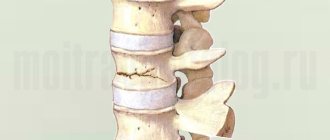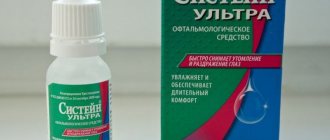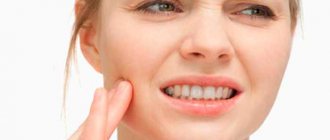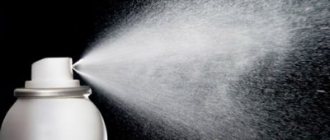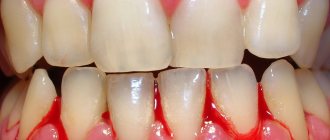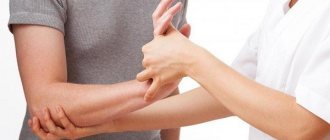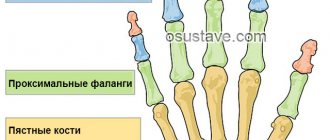Poisonous snake bites pose a danger to human life and health. Despite the fact that these reptiles rarely attack first, medical statistics record such cases every year.
Considering that even a minimal dose of snake venom causes severe intoxication processes in the body, first aid for a snake bite should be provided immediately, before the victim is examined by medical personnel.
On the territory of Russia and its neighboring states, two types of snakes are common: the viper and the grass snake. Snake bites are not dangerous to people, but a few drops of viper venom can cause serious deterioration in well-being.
We will tell you in our article what symptoms appear after a snake attack, as well as how first aid is provided for a viper bite.
Symptoms of poisoning
On the territory of Russia and in neighboring countries, two types of reptiles are common: the grass snake and the viper. The bites of the former are not dangerous to human life and in rare cases are accompanied only by the development of an allergic reaction. But viper venom can cause a significant deterioration in health. To be able to provide assistance with a snake bite, you need to know the main symptoms of intoxication with a poisonous substance of a reptile animal. If a person has been bitten by a viper, this can be recognized by the following signs:
- 2 large skin punctures are clearly visible in the bitten area;
- the damaged skin burns slightly and there is intense pain;
- After 10-30 minutes, the skin at the site of the bite swells and acquires a bluish-purple color.
With moderate severity of snake venom poisoning, the affected person experiences severe dizziness, nausea, a thready pulse, and a decrease in blood pressure. With high intoxication and increased susceptibility, these symptoms are accompanied by pronounced signs:
- prostration;
- pale skin;
- confusion;
- cold extremities;
- pain in the lymph nodes and their enlargement;
- formation of blood clots in the veins.
In addition, it is possible that you may experience fever, severe thirst, and rapid and difficult breathing. The person may lose consciousness.
The severity of symptoms after the bite of a poisonous reptile depends on the age of the victim, the species of the snake, its size and condition of the teeth, the amount of poison injected, as well as the location of the injury, the behavior of the person after receiving it and the health status of the bitten person.
If you do not quickly provide medical assistance to the victim, then everything can end in disaster. The most dangerous complications after intoxication with snake venom are necrosis of soft tissues, gangrene of the affected limb, and dysfunction of internal organs.
Important information
First aid for a poisonous snake bite should be provided based on the severity of symptoms, which depend on the following factors:
- Age category of the victim. Symptoms are always pronounced in children and elderly people.
- Level of development of the immune system. It is always more difficult for a person with chronic diseases to cope with the manifestations of intoxication.
- Species and size of the biting snake. It is believed that the bite of a cobra is more toxic than that of a viper, but the venom of both varieties of these reptiles is very dangerous for the victim. The smaller the snakes, the less poisonous substance they release into the human blood.
- The place where the poison got in. A person’s feet are always at risk. If snakes bite your leg, symptoms develop within half an hour or 1 hour. However, if reptiles bite you on the face or neck, signs of intoxication develop very quickly, so first aid should be used in the very first minutes after the bite.
- Behavior of the victim after a snake attack. Intense movements and fast walking will contribute to the rapid filling of the blood with poison, which will lead to pronounced symptoms.
If emergency assistance is not provided on time, the poison, quickly spreading throughout the body through the bloodstream, will lead to the death of a person. Therefore, at the first signs of intoxication, you should urgently contact a medical facility.
Emergency actions
If you do not have antihistamines with you, you must immediately call an ambulance. This is what you must do if you are bitten by a snake. First aid that can be provided to a person before the arrival of medical workers consists of consistently and accurately performing the following actions:
You must call 103 or 911 and report the bite and the location of the victim.
- It is necessary to provide the victim with peace, lay him on a horizontal surface and calm him down. It is prohibited to move a person from place to place.
- If the snake is attached to the body, then you should try by any means to unhook it, and, if possible, photograph it. This will help medical professionals determine which species it belongs to.
- It is necessary to partially free the bitten area from clothing, gather the skin in the bitten area into a fold, squeeze, and when drops of poison appear, carefully wipe off the squeezed out toxic substance.
- You should grab the skin around the wound with your teeth and begin to suck out the poison from it. In this case, it is necessary to constantly spit out the sucked liquid. The procedure must be carried out for 20 minutes. It is worth noting that it is effective only when carried out in the first 4 minutes from the moment of the bite.
- It is necessary to treat the affected area with an antiseptic and apply a pressure bandage slightly above the bitten area. It shouldn't be too tight. Your finger should be able to fit under it freely.
- You can apply ice to the affected area. This cooling method is used every 7 minutes, and then take a break for 5 minutes to prevent tissue frostbite.
- If the wound is on the leg, you can bandage a hard object to the uninjured limb. If your hand is bitten, the splint should be secured by bending it at the elbow.
- After this, it is necessary to give the victim plenty of fluids, this will speed up the process of removing toxins from the body.
- If you have antiallergic medications with you, it is recommended to give them to the person who was bitten.
- If the heart and breathing stop, it is necessary to perform an indirect cardiac massage and perform artificial respiration.
If a person is bitten by a non-venomous reptile animal, then it will only be enough to treat the wound with some kind of antiseptic. This type of reptile can be identified by the bitten area. It will have four longitudinal rows of barely noticeable teeth wounds.
Prevention
Basic preventive measures include rules of behavior in places where snakes may live. Precautions when meeting an animal can also save a person’s life.
When walking in the forest, wear high boots and thick clothing.
- If a snake is dangerously close, you should not move sharply or swing your arms or legs. This will provoke a throw.
- When hiking, tall grass is parted with a stick in order to detect dangerous animals in time. It is advisable to wear high boots and thick clothing when walking in the forest.
- Before visiting places remote from the city, be sure to put an antidote in your first aid kit.
Things you shouldn't do
It often happens that when people are bitten by a poisonous snake, they begin to take actions that can only aggravate the situation, that is, lead to serious complications. To prevent this, you need to know what not to do if bitten by a snake. Prohibited manipulations include:
- cauterization of the bitten area of the body;
- applying heat to the damaged area;
- applying a tourniquet to the affected limb;
- cutting the bite site;
- use of non-sterile improvised means;
- suction of poison if there is caries or damage to the oral mucosa;
- consumption of alcoholic beverages;
- icing a limb for a long time.
In addition, it is not recommended to subject the injured person to physical stress. When the bitten person exhibits physical activity, the spread of the toxic substance throughout the body occurs faster.
What not to do if you are bitten by a snake
Often, when wanting to help, very serious mistakes are made that can lead to dire consequences.
If the assistance provided was initially incorrect, then it will be very difficult for doctors for the person’s recovery.
What not to do when providing first aid:
No tight tourniquet! You cannot apply a strong tourniquet to the bite site or above it - this will cause necrosis, tissue death and blood poisoning, which can lead to irreversible consequences and amputation of the limb. Applying ice to the bite site will produce exactly the same sad effect.
Cauterize the wound using matches, glued metal or coal. - this will only add unnecessary pain and suffering to the patient, but will not bring any benefit; snake venom is not destroyed under the influence of high temperatures.
You cannot cut the bite site - this will increase the pain shock and can provoke additional infection of the wound.
Under no circumstances should you drink alcohol as an antiseptic or to relieve stress - snake venom when interacting with alcohol can cause hemorrhage.
You can’t move a lot and make unnecessary movements. You must immediately lie down and stop moving. Excessive physical activity or suction of poison will provoke a faster movement of toxins throughout the body.
Treating the snake's teeth wound with alcohol will increase the rate of absorption of the snake's venom. You should also forget about hydrogen peroxide and potassium permanganate. Just leave the wounds alone until the ambulance arrives.
Manipulations of medical workers
After the arrival of doctors, the provision of qualified assistance aimed at eliminating intoxication of the body begins. The first manipulations are carried out by medical workers right at the scene of the incident. For this purpose, products from a sanitary bag are used. The victim is then taken to the nearest hospital for hospitalization. Medical intervention involves the following actions:
- Administration of anti-snake serum. It has an antitoxic effect, helping to eliminate intoxication.
- Mandatory administration of solutions that replenish the lack of fluid, reduce the manifestations of poisoning and normalize blood pressure.
- Administration of glucocorticoid hormone preparations that eliminate allergic reactions and pathological changes in blood vessels.
- To eliminate the effects of toxic substances, medications are used that help restore impulse transmission in nerves and muscles.
In addition, diuretics may be administered to remove toxins. As a rule, an adult and healthy person returns to normal within 48 hours after poisoning with snake venom, if the correct emergency care was provided.
What to do when there is a strong local reaction
Or there are clear systemic effects (confusion, low blood pressure (systolic blood pressure <90 mmHg), high heart rate, high respiratory rate).
Patients with shock and severe symptoms are admitted to the intensive care unit.
To treat snake bites, use:
- Cortisone (100-200 mg intravenously).
- Antihistamines are given (Tavegil 1 mg IV x 2). Scientific evidence for the effectiveness of this treatment is weak.
- Serum treatment, please see instructions below.
- Immobilization of the body with the bite area, preferably in a high position. Suspend your arm high in a sling from a bed or special equipment.
- Medicines for pain relief.
- For allergic, anaphylactic reactions and bronchospasm, give epinephrine (1 mg/ml, 0.3-0.5 ml intramuscularly into the thigh muscles).
- For bronchospasm, treatment is provided with beta-agonists in inhaled forms, for example, salbutamol or terbutaline (Ventolin / Bricanyl).
- When there is anaphylactic shock, adrenaline administered intravenously, 0.1-0.5 mg (0.1 mg/ml), will help.
- An adequate fluid replacement such as Ringeracetat, hydroxyethyl starch or Macrodex should be provided. Provide replacement of the volume of lost fluid with a balanced electrolyte and colloids, preferably in the form of dextran. Do not give large amounts of dextran as this may affect blood clotting.
- Thromboprophylaxis should be given, for example, with low dose Dalteparin sodium (Fragmin) (2500-5000 units subcutaneously) or enoxaparin sodium (Lovenox) 40 mg subcutaneously, regardless of weight.
- Inotropic support and other treatments for shock are based on indications for cardiovascular failure, such as norepinephrine infusion.
- Oxygen may be required on a leash or via nasal prongs.
- Check Hb, cell counts, platelets, CRP, myoglobin, PTK/PTT, FDP, S-haptoglobin, LD.
Find out more Cotton muzzle: characteristics of poison, habitat, danger to humans
Useful tips
There are some recommendations that you can follow to minimize the likelihood of being bitten by a reptile. So, to protect yourself from snakes, you need:
- inspect the area and stretch the plants when organizing a picnic;
- give preference to trousers and closed shoes when outdoors;
- Under no circumstances should you walk barefoot on the ground;
- you should look carefully at your feet;
- when moving through overgrown areas, you need to use a stick to push the vegetation in front of you;
- when meeting a snake, you should not try to kill it or step on it: you should just slowly move away without turning your back to the reptile;
- you should never tease a snake or stir up its nest;
- When setting up camp for the night, you should choose an open place with low vegetation, and also avoid rocky areas.
Also, purchasing a snake repeller is a good option. It is an ultrasonic device that is very sensitive to reptiles.
Thus, correctly and timely first aid for a snake bite can improve the condition of the bitten person. Pre-medical emergency actions help to avoid serious complications, and in some cases, save a person’s life.
Types of poisonous snakes
There are a large number of snakes in nature, but only 11 species pose a real danger to people living in the countries of the former USSR. Some animals in this class are completely harmless. Their diet includes small rodents or insects.
Family of already-like
Copperheads and snakes do not pose a danger to people.
Representatives of this group can be found in the forest, near reservoirs and on slopes. Copperheads and snakes do not pose a danger to people. When attacked, a substance is released from the salivary glands that does not affect health. But in the area of a snake bite, suppuration and swelling often occur, which are accompanied by pain. The first aid for a non-venomous snake bite is to wash the wound and bandage it to prevent infection.
Adder family
Asps have two fangs in front of the mouth, through which poison is released.
This group includes more than 250 representatives of venomous snakes. Their size, shape and behavior vary depending on their habitat. Asps have a common feature - two fixed fangs in front of the mouth, through which a poisonous secretion is released.
Viper family
The group ranks second after the aspidae and is widespread on almost all continents of the earth. The color of animals of this species changes depending on living conditions.
Desert vipers are sandy-brown in color.
Desert vipers are sandy-brown in color. The steppe snake has a light color. But all simple vipers have a peculiarity - a geometric pattern and an enlarged head in the temporal region.
The relationship between the location of the bite and the intensity of its manifestations
Consequences of a snake bite
The severity of the bite symptoms will depend on:
- Individual characteristics of the human body and its age. Individuals in childhood and old age are most susceptible to snake bites. A special role is also played by the state of the body’s resistance, the presence of a history of chronic diseases and the general condition of the person.
- The type of reptile, its size and age.
- The condition of the snake's teeth. If there is an infection on the snake's teeth, pathogenic microorganisms will enter the human body through the wound.
- Localization of the bite. In most cases, bites are observed that are located on the lower extremities, in which case the development of symptoms will be slow. If a snake bites a person on the neck, face and parts of the body in which large veins are located, an extremely rapid course of events and almost instantaneous development of pathological symptoms will be observed.
- Motor activity of a person after a bite. Excessive physical activity will lead to rapid spread of poison and more severe pathological symptoms of poisoning.
Distinctive features of vipers and properties of snake venom
In Russia, the most common viper is the common viper . It belongs to the order of squamates, the family of vipers (vipers). Vipers have a short and thick body, ranging from 30 to 80 cm in length. Moreover, females are always larger than males. The snake's head has a characteristic triangle shape that distinguishes it from other types of reptiles. Weight reaches 50-180 g, and life expectancy is 15-30 years.
Vipers have excellent day and night vision and feed on small rodents, frogs, insects, and birds. The colors of reptiles are varied - in gray-blue, dark brown tones or black. Most often, males are lighter than females. Typical of both sexes is a dark stripe running along the reptile's spine.
This species of snake tends to lead a sedentary lifestyle, occasionally migrating to winter habitats. Vipers are cold-blooded, therefore thermophilic, they love to spend time basking in the sun. In autumn and spring, they can often be found in forest clearings and edges, at the edge of swamps and ponds, in garden plots and in places of land management work.
It is important to know some behavioral features of these reptiles:
- Vipers are not the first to show aggression towards people and always try to hide from them.
- Hissing is a warning sign indicating the presence of a snake, not a desire to bite.
- The cause of a viper attack is most often careless and unintentional human actions.
Viper venom is not only a dangerous substance, but also a medicinal raw material used in the manufacture of medicines and cosmetics. It has a complex composition, including proteins, lipids, peptides, amino acids, salts of inorganic origin, and sugar. It also contains a large number of necrotizing enzymes that cause negative processes in blood cells and tissues.
The greatest danger from reptile venom is for people who have serious diseases of the cardiovascular system and have not received timely medical care.
The composition of the poison and its effect on the body
Snake venom has different effects on the human body, depending on what elements are included in it.
Its main components are:
- proteins;
- amino acids;
- enzymes;
- microelements.
It is a thick transparent liquid of yellowish or greenish color, bitter in taste.
Snake venom can have 2 types of effects:
- neurotoxic;
- hemovasotoxic.
Neurotoxic venom is more dangerous because it causes paralysis of the nervous system, stopping neuromuscular transmission. The body's reaction is characterized by rapidity. Neurotoxins are part of the venom of aspids.
Hemovasotoxic poison acts progressively - first there is a spasm, then vascular impermeability, swelling of tissues and organs. The circulatory system and internal organs are primarily affected, while the nervous system remains virtually unaffected.
With timely medical care, a person bitten by carriers of neurotoxic poison, which is excreted by the kidneys without causing destruction to internal organs and tissues, recovers faster. When hemovasotoxic poison penetrates, the consequences are more destructive, which is why recovery takes a long time.
Administration of antidote
Administration of antidote
When snake venom enters the cavity of the human body, to alleviate the patient’s condition and prevent the formation of complications, it is necessary to administer an antidote. Please note that such administration is considered justified if it occurs within the first 24 hours after the bite. If necessary, the administration of the antidote can be repeated.
In a situation where a person has been bitten by a reptile of the viper family, in the first few hours after this, he needs to be administered a serum, which is called “Antigyurza”. It is this drug that helps prevent the development of a severe allergic reaction in the form of anaphylactic shock.
The medication is administered subcutaneously into the subscapular area, and the following scheme must be followed:
- the first time 0.1 ml is administered. drug;
- in 15 minutes additionally 0.25 ml.
This is almost all the basic information about how first aid is provided for snake bites. Following these recommendations will help alleviate the condition of the bitten person, and in some cases even save his life.
What to do if bitten by a snake: first aid rules and dangerous mistakes
May this year pleases with almost summer heat, but this also has a downside: two cases of snake bites have already been recorded in the Moscow region. These reptiles became more active as the weather warmed up, and city dwellers going for walks through forests and fields should be very careful. Read the material about precautions and what to do if a snake does bite you.
Poisonous viper
© flickr.com, Imtiaz Ahmed
According to the Ministry of Emergency Situations for the Moscow Region, only two species of snakes live in the Moscow region: the non-venomous and harmless common snake (Natrix natrix) and the poisonous common viper (Vipera berus).
“The statement that vipers live next to us is true, but not everyone can boast of meeting them. Even avid mushroom pickers have not seen them all. The explanation lies not only in the secrecy and caution of the snakes themselves, but also in the fact that the common viper is characterized by focal distribution. That is, relatively dense populations are separated by large areas where snakes are absent. This is due to the availability of places for wintering. Because of this feature, you can live several kilometers from the fire and never encounter a snake. Or vice versa: go into the forest once and find about a dozen individuals per 100 meters of the route,” says the website of the Ministry of Emergency Situations for the Moscow Region.
Beware of ticks: how to protect yourself, children and pets from danger>>
Where are snakes found?
© flickr.com, Sergey G
Snakes are reptiles, they do not have their own thermoregulation, so they need warm and sunny places to “warm up” to the desired temperature. This determines their habitat: marshy areas next to open glades, forests and groves with edges where snakes can bask in the sun.
It happens that snakes crawl to human habitation. To avoid this, you need to keep the land in order: do not clutter it with leftover building materials and piles of boards, which can become a refuge for vipers.
Barbecue season: where you can’t light a barbecue and where it’s allowed>>
How to avoid a viper bite
GIPHY website
Vipers feed mainly on rodents, chicks and small birds, frogs and lizards. For small animals, the viper's venom is fatal.
“Since a person is not within the viper’s sphere of food interests, there is no point in attacking him, just like an elk, wolf or badger. And talk about natural malice and hatred of people should be classified as delirium,” notes the website of the Ministry of Emergency Situations for the Moscow Region.
Vipers are very cautious and do not at all strive to meet a person. Most often, a person passes by a lurking reptile without even suspecting its presence.
A viper will bite only if it regards a person’s actions as an attack: for example, he stepped on the snake or tried to grab it with his hand.
It is quite easy to protect yourself from a snake bite - thick, closed shoes and wide, tight pants will protect your feet. Snakes cannot jump high, 20 centimeters is their limit. To avoid hurting your hands, simply do not touch the viper, do not try to throw it away - this will provoke an attack. You should not bend over to the snake, squat down next to it and try to take a closer look.
If you do not attack first and do not provoke the snake in any way, it will hiss and crawl away.
How to protect yourself and your pets from rabies>>
Why is viper venom dangerous?
© flickr.com, AllieKF Follow
The snake bites instantly and immediately tries to hide. Two points remain at the site of the bite, less often one - if the snake has a broken tooth or the bite is lateral.
Viper venom is of the hemotoxic type, that is, it has a hemolytic effect - it destroys red blood cells. In addition, it contains a neurotoxin that affects the cardiovascular system.
“When bitten, the following symptoms develop: pain, swelling and multiple hemorrhages in the bite area. In addition, internal hemorrhages occur in various organs of the body, and vascular thrombosis appears. At the site of the bite, two deep wounds from poisonous teeth remain (sometimes there is only one wound). The blood in these wounds quickly bakes, and there is almost no bleeding from them; the surrounding tissues swell and turn blue. If the hand is affected, then after half an hour the fingers stop bending due to very painful swelling, which can spread all the way to the elbow,” says the website of Rospotrebnadzor for the Moscow region.
The victim may feel sick, body temperature rises, and chills appear. Dizziness and vomiting occur as the circulatory system is damaged, accompanied by internal blood loss and a sharp drop in blood pressure. This causes severe weakness, and in severe cases, loss of consciousness. The bite of a viper is most dangerous in the spring, but in the summer its poison weakens.
According to the region's Ministry of Emergency Situations, a bite from a common viper is normally not fatal. At the same time, you need to understand that a snake bite is more dangerous for a child than for an adult who does not suffer from allergies. The same is true for older people and people weakened after illness.
Getting ready for summer in Podolsk: proper nutrition and physical activity>>
What to do if bitten by a snake
© flickr.com, Tony Alter
The first thing you need to do is call an ambulance. Inept actions can harm the victim more than the venom of a viper.
“To slow down the spread of the poison before the doctors arrive, you need to apply a tourniquet to the affected limb (you should only resort to this if you know how to do this), and then bandage it tightly along its entire length. Immediately after this, the tourniquet should be removed. Thus, blood flow in the bitten limb will slow down. The blood will perform its function: nourish the tissues with oxygen, but the poison will not penetrate far beyond the bite site. For the same purpose, it is very important to immobilize the bitten limb. The victim should be given as much to drink as possible - clean water,” advises training instructor-methodologist Stas Zhuravsky.
He adds that if this is your first experience with first aid, do not use a tourniquet. Its inept use in case of a viper bite can lead to necrosis and even gangrene.
If possible, you should carefully treat the wounds with antiseptics: chlorhexidine, hydrogen peroxide. The affected limb will swell, so you need to remove all rings, watches, and bracelets from it in advance.
Coxsackie virus: symptoms, danger, prevention>>
What not to do if bitten
© flickr.com, Fyn Kynd
The most common advice for a snake bite - to suck out the venom from the wound - is at the same time the most controversial. The poison spreads very quickly from the bite site, and there is no point in sucking it out, especially after some time. But an infection can be brought into the wound. In addition, there are often small and invisible wounds in the mouth, which means that there is a possibility that the poison will harm the person providing assistance.
Also, you should not try to squeeze out the poison - this will only accelerate its spread throughout the body and further injure the tissues already affected by the poison.
“Under no circumstances should you cauterize the bite site, wash it with a solution of potassium permanganate, make cuts, or drink alcohol internally. All this can only do harm. The victim can be given painkillers and allergy medications,” advises Zhuravsky.
Conscious consumption and helping nature: advice from an eco-activist from Podolsk>>
Seeking medical help
Website of the city of Korolev
Most often, a snake bite is not fatal to humans. However, the poison has a negative effect on the functioning of internal organs and can cause a severe allergic reaction.
If you are bitten by a snake, you should seek medical attention as soon as possible. Doctors use a special serum, the components of which neutralize the snake’s venom. The serum can be purchased independently, but it is dangerous for a person without experience and medical education to administer it to the victim, since there is a special scheme and monitoring of the patient’s condition is necessary.
“The serum does not act instantly; it may take several hours for the condition to ease. It is likely that, in addition to the serum, other medications will be required to correct the symptoms that the poison has already caused. With timely treatment, after 5-6 days, and often even earlier, all unpleasant sensations will completely disappear,” says the website of Rospotrebnadzor for the Moscow Region.
How to prepare for the dacha season: plot, trees, beds, seedlings>>
Treatment
Anti-snake serums are designed to neutralize viper venom in the hospital.
It doesn’t matter which part of the body the reptile bit, but the type of snake matters. Antigyurza in ampoules helps against viper bites. In medical practice it is also used: “Serum against the venom of the common viper.” There are no vaccinations against snakebites as such, but a vaccine with an antisnake component neutralizes the poison and saves internal organs from damage. The antidote for a viper can be a composite one - for example, “Anticobra and “Antigyurza”. After the antidote has entered the body, other consequences of the viper bite are eliminated.
Antishock therapy is carried out. As soon as the antidote begins to act, Prednisolone and Diphenhydramine are additionally prescribed for a viper bite. For mild poisoning, specific treatment is not necessary. The doctor conducts diagnostics and determines the condition of vital systems. Long-term rehabilitation will most likely not be required. But treatment is not stopped, because after a viper bite there can be serious complications. It is recommended to take antihistamine tablets, medications that will help relieve swelling and improve kidney function.


